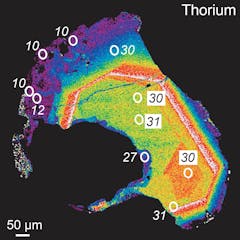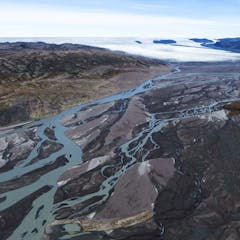
Articles on Geoscience
Displaying 1 - 20 of 47 articles

Landslides are usually sudden and cause devastation in their wake. Here’s why they are seemingly impossible to predict.

The Albanese government will invest $566 million over a decade on data, maps and other tools to promote exploration and development in Australia’s resource industry.

Measuring the concentration of radioactive elements in a single, sand-size crystal reveals the growth of the Himalayan mountain range over time.

Satellite photography of the Ukrainian city of Bakhmut shows block after block of destroyed buildings. Satellite radar provides a different view – a systematic look at the destruction of the whole city.

New England has thousands of miles of stone walls. A geoscientist explains why analyzing them scientifically is a solid step toward preserving them

There are a lot of myths about crystals − for example, that they are magical rocks with healing powers. An earth scientist explains some of their amazing true science.

Some New Zealand universities have proposed staff and course cuts in earth sciences. This could leave the country ill prepared to deal with natural hazards and extreme weather.

The soil was extracted during the Cold War from beneath one of the U.S military’s most unusual bases, then forgotten for decades.

Our activities now affect the entire planet. But there’s a vital debate over when we started disrupting these systems. Was it 1950 – or hundreds and thousands of years earlier?

Studying impact craters can broaden our understanding of the Earth’s evolution and life, as well as its possible future.

Some people were woken up near midnight by a powerful ground-shake. But did you know earthquakes occur in the greater Melbourne region about once a month – even though we can’t always feel them?

When mud, fluids and gases erupt at the Earth’s surface, they hint at what’s happening underground, allowing scientists to build a more comprehensive 3D view of what’s going on inside our planet.

Southern Australia’s Nullarbor Plain is offering up evidence of Earth’s past landscapes and ecosystems, exceptionally preserved for millions of years.

The world’s biggest cycling race is a great way to teach people about geology – and test our own ideas.

Ancient blobs deep inside the Earth gather together and break apart like continents, according to new research.

Tiny pieces of an asteroid have revealed an unlikely origin for much of the water in Earth’s oceans.

Impact craters are relatively shallow, so these bowl-shaped “dents” in Earth’s rocky crust can be easily buried or erased by erosion.

Using geology and AI, a virtual model of how the Earth’s tectonic plates have evolved can help reveal deposits of copper.

Everest didn’t become the highest mountain overnight. This process was excruciatingly slow; a result of complex interactions between the solid earth, the atmosphere and the biosphere.

Icelandic authorities have recently raised the threat level of the Grímsvötn volcano.
